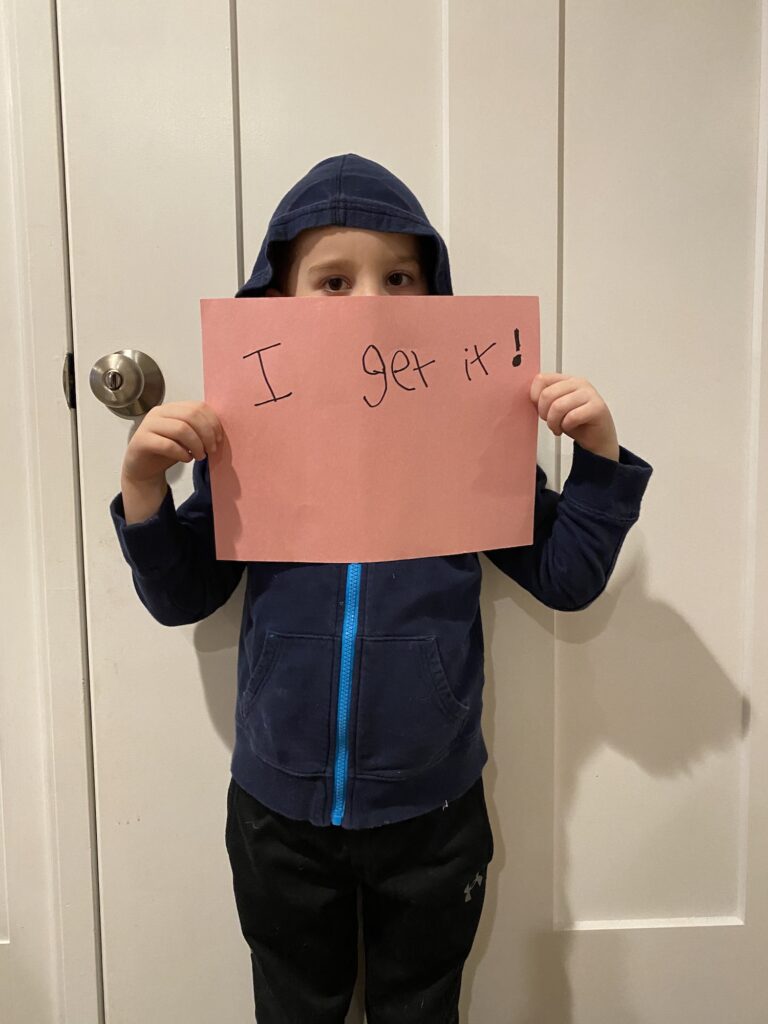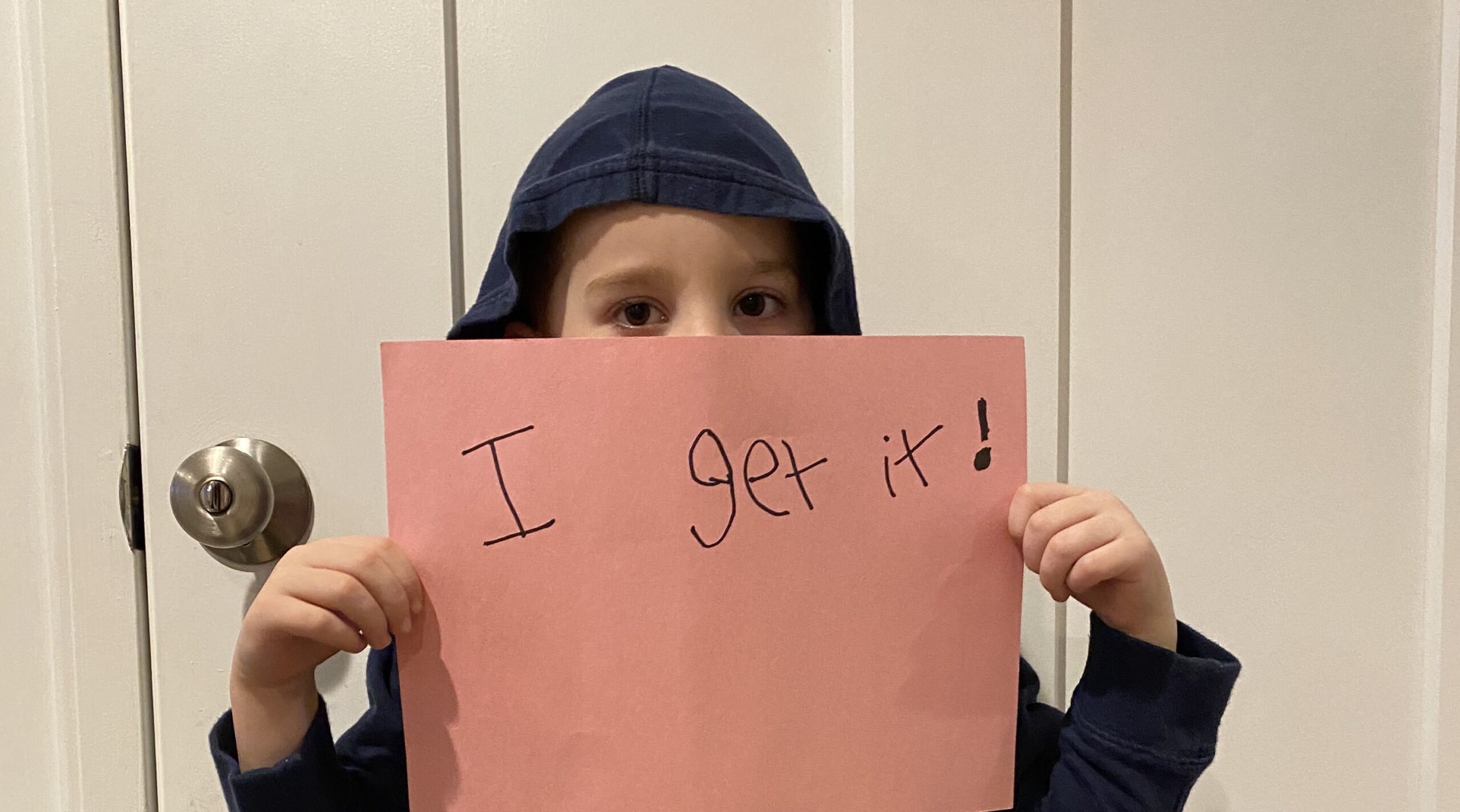“Do you know what your nephew just did?”
This was a question my mom posed to me when my little nephew, B, was 4 years old. In my mind, I thought, He’s 4. He could be doing anything: leaving Legos everywhere, practicing his “minja moves” in the living room with breakables, packing the dishwasher with condiments from the cabinets again, etc. I had no idea.
“What did he do, Mom?”
“I hurt my back picking him up so I went to lay down. He came barreling into my room, wanting to play. When I told him my back hurt, he crawled into bed and laid down next to me. He rubbed his back and said ‘I get it, Grammy, my back hurts too.’”
Epic levels of cuteness to be sure, but it also reveals perhaps the best thing about B: he’s one empathetic little dude. Most kids are, but B is at a whole other level. Clearly, his back was completely fine and he wanted to play with his Grammy. When B saw her laying in bed, hurting, he immediately put himself in her shoes. He gets this high-level of empathy from my sister, a dedicated nurse practitioner. Trust me, if you are sick, you’ll want her in your hospital room. She’ll work her hardest to get you better, but she’ll also understand your pain, your fear, your anger, or whatever emotion is driving you. She’ll acknowledge it and try to lift some of your burden because she knows it will help your recovery. The empathy she has never ceases to amaze me. The proverbial apple didn’t fall far from the tree with B.
As an IT project manager, I can only wish to have that much empathy. How many times have you had a client give you a massive project with an unrealistic deadline? Or not the right resources? Or not enough money? Or all three? And in those instances, did you lose your mind and want to scream “IT CAN’T BE DONE!”? Your reaction is based on YOUR emotion, YOUR knowledge, and YOUR experience. You know you can’t do that crazy task in two days, with just two people, or with just $2000. You were thinking from your point of view.
But what if you put yourself in your client’s shoes? What if you “laid down with them” and felt their pain? What if you set aside your feelings and tried to understand what is driving them to task you with a massive project that seems doomed to fail? In the seven steps of the Relevance Path methodology, a key intangible built within each step is empathy. Understanding what is driving your client to make these demands is critical to achieving project success.
Be like B (now 6 years old) and put yourself in another’s shoes.

That’s Relatable.
Several years ago, a client hired me to facilitate software requirements gathering on a high-visibility project. The project also had a completely unrealistic deadline. My client struggled to get the end-user groups together to gather requirements so his development team could get to work. Previous project managers tried to force the groups to come together but only succeeded in increasing their resistance.
Channeling my inner B, I first listened closely to my client’s concerns. He was afraid of being unable to deliver the software changes by the deadline, causing this high-visibility project to fail and having to deal with that stain on his record. As a project manager, I live with that same fear every day. I get it. Then I reached out to the two end user groups. Both groups had a whole host of concerns, but the biggest concern was a fear of change. As a military kid, I moved every 2 years. Change sucks. I get it.
Once these feelings were out in the open, it became much easier for me to navigate the waters. As long as my client could see progress on the requirements gathering, he felt more comfortable providing senior management with more realistic expectations about the deadline. The two end user groups eventually accepted that the changes would benefit them and began providing detailed software requirements. It was still a very messy and stressful process to the finish, but we got there. We hit the unrealistic deadline with literally minutes to spare, deploying the brand-new functionality at 11:50PM on the deadline date. Phew!
Not everyone is as naturally empathetic as B and my sister. I have to make a concerted effort to understand my clients’ concerns and sometimes I truly don’t understand them. Sometimes I can only understand that their concern is a big deal to them and I have to work with it. However, I have found that when I try to use the same levels of empathy as B and my sister, when I lay down with them to feel their pain, I have been far more successful in achieving my clients’ goals. Being empathetic also shows clients you really care about them and their end goals- not yours. My experiences helped shape the development of the Relevance Path, which is why empathy is described as one of those intangibles in Chapter 1.
So, the next time your client asks you for something crazy, stop for a minute. Channel your inner B, lay down with them, try to understand their concerns and say, with meaning, “I get it.”

Here’s B, sharing his greatness.
When Have You Used Empathy?
Now’s your chance to chime in. When have you used empathy to help you understand challenges in your projects?
About the Author:
Sarah C. is a program manager, professional problem solver, and the Princess of Process. She’s pretty frickin’ awesome.


